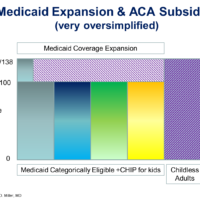Humana has put another couple of videos on YouTube in their ongoing series to explain – from their perspective – how the healthcare system works.
The first new video is “Insurance Companies and Prescription Drugs.” Like their other videos, this one paints the insurance industry’s as rosy and altruistic, while stating that “Prescription drug manufacturers are allowed to set their own prices, and they often build large profit margins into name brand drugs to recoup the costs of researching, marketing and advertising.”
This statement strikes me as very curious. First, how do companies “build large profit margins into name brand drugs?” Maybe Humana means that pharma companies are making sure that their medicines provide patients with significant clinical benefits? Or more likely, what I think they meant, was that prices are set to include large profits. However, the problem with that implication is that prices for pharmaceuticals – both brand name and generic – are really set at whatever the market will bear to fulfill the simplest of economic theories, i.e. to maximize profits.
Recouping research and manufacturing costs really comes into play for company’s research and development decisions and priorities. These decisions are important for keeping innovative pharmaceutical companies in business because analyses show that only about 3 of every 10 new medicines ever recoup their to development costs. And from what I leaned by talking with people in other industries, this is a lot higher than the ratio for book publishing or movies – which are in the 1/10 to 1/20 range.
Later in the video is another curious statement about how mail order delivery means that the patient gets a monthly supply of their medicine every 90 days. [Go to time stamp 1:30 in the video.] Wouldn’t that leave patients without medicines for 2 months? This doesn’t seem like a good way to encourage disease management through pharmaceutical compliance.
And lastly, the other Humana video is about the difference between PPO and HMO health insurance plans. This video is titled “What is a PPO?” While simple like the other videos, it doesn’t seem as skewed.

